Hall of Literary Glory (Wenhuadian)
As you pass through the Gate of Unified Harmony (Xiehemen) after crossing the Golden Water Bridges, you'll see the Hall of Literary Glory, Wenhuadian, an auxiliary building in the east of Forbidden City's Outer Court. It had been a royal academic center from 1420 to 1776. Today, it houses the Calligraphy and Painting Gallery.
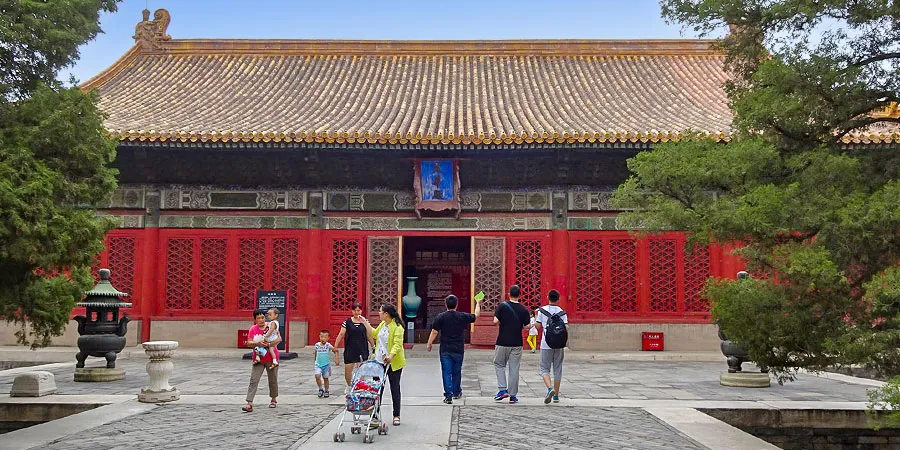 |
| Hall of Literary Glory, Forbidden City |
Functioned as the Royal Academic Center
Crown Prince's Study & Workplace (1420-1536)
Completed in 1420, the Hall of Literary Glory served the crown prince as both study and workspace. It was strategically placed in the east and adorned green glazed for the crown prince, as the ancient Chinese believed that the east and green represent growth and vitality.
Before each lesson, instructors should submit their handouts to the emperor for approval. The study schedule was rigorous, with days of break only on the first and fifteenth day of each month, or when bad weather struck, particularly during harsh winters. For a naughty young crown prince like Zhu Houzhao (1491~1521), this routine could sometimes feel like an endless grind, prompting him to skip classes now and then.
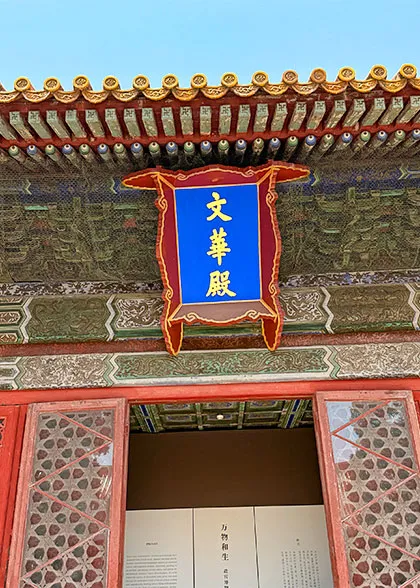 |
| Hall of Literary Glory Plaque |
In the Ming Dynasty (1368-1644), six officials known as the "Grand Scholars" worked as the emperor's top advisors. Among them, the Grand Scholar of the Hall of Literary Glory served not only as a key advisor but also as the crown prince's tutor.
From 1748 to the late 19th century in Qing Dynasty, this position became the highest minister. A notable figure in this role was He Shen (1750-1799), the most renowned corrupt official in Chinese history, who was listed in the Asian Wall Street Journal's "World's 50 Richest People in the Last Millennium" in 2007.
Emperor's Study Room & Academic Forum (1436-1776)
In 1436, a nine-year-old emperor ascended the throne. Guided by wise civil officials, he embraced the ancient imperial education system rooted in the Han Dynasty (202 BC~220 AC). He delved into Confucian classics and the wisdom of feudal rule within the Hall of Literary Glory, later moving to the new Pavilion of Literary Profundity (Wenyuange) in 1776.![]() Emperor's Academic Life
Emperor's Academic Life
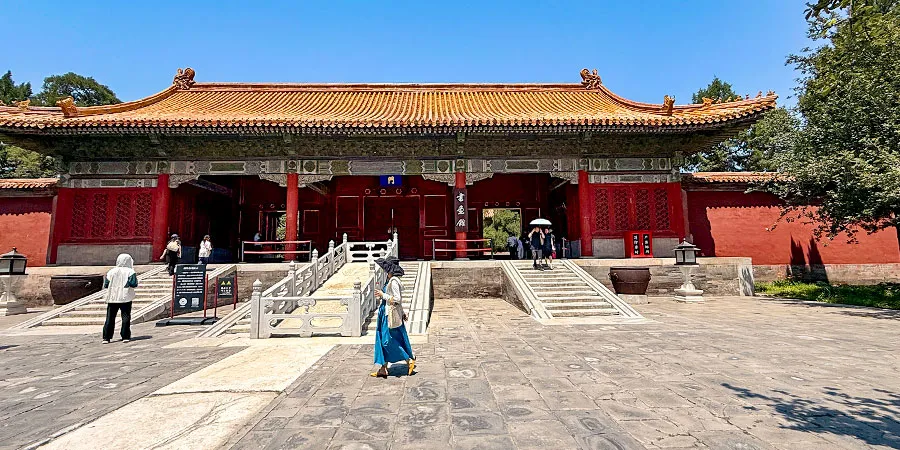 |
| Gate of Literary Glory |
The emperor studied in two ways. First, there were grand academic ceremonies three times a month during spring and autumn, focusing on demonstrating the emperor's commitment to learning through elaborate rituals, including sacrifices, announcements, lectures, and feasts.
For daily learning, the emperor had morning classes. Four to six scholars rotated, sharing their knowledge of the classics. These classes also served as a forum for discussing factual issues, making them an efficient and practical part of his daily routine.
Function Today: Calligraphy and Painting Gallery
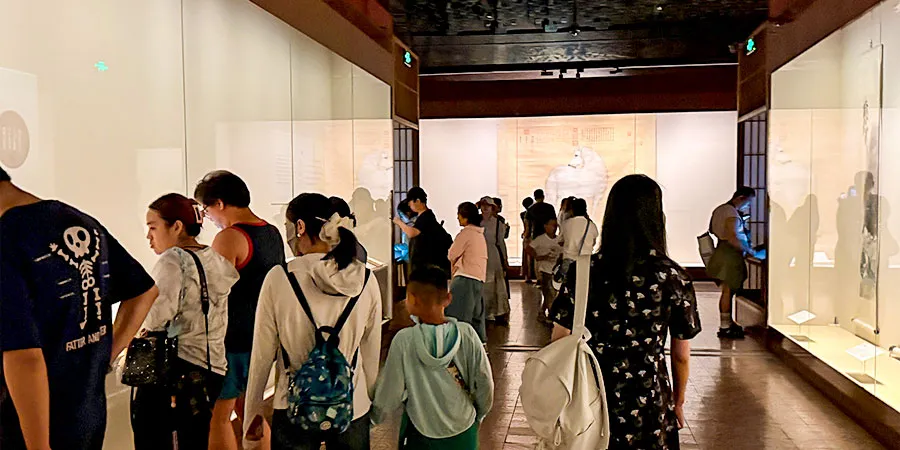 |
| Inside Calligraphy and Painting Gallery, Forbidden City |
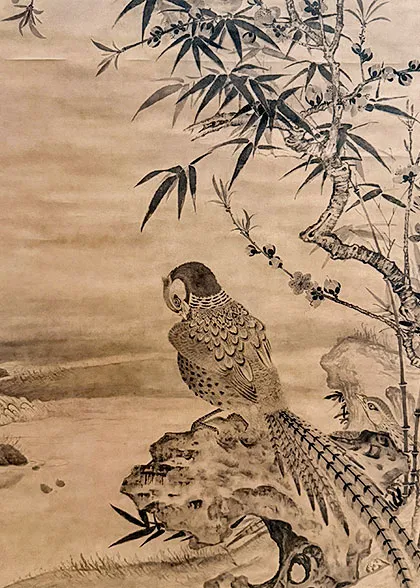 |
| Exhibited Ancient Bird Painting |
The Hall of Literary Glory, now the Forbidden City Calligraphy and Painting Gallery, showcases masterpieces that can date back to the 3rd century through free themed exhibitions, which are noticed on the Palace Museum website in advance.
For example, from Apr. 30 to Jun. 29 in 2025, visitors can enjoy a Chinese animal-themed paintings exhibition during Song Dynasty (960~1279) here, named "All Beings Thrive in Harmony".
Layout & Building Highlights
The complex spans 90m (295 feet) east-west and 140m (459 feet) north-south, enclosed by walls.
It includes the Gate of Literary Glory (Wenhuamen), Main Hall, east Hall of Benevolence (Benrendian), west Hall of Collective Virtue (Jiyidian), rear Hall of Reverence (Zhujingdian), Pavilion of Literary Profundity (Wenyuange), and adjacent Hall of Transmitted Wisdom (Chuanxindian).
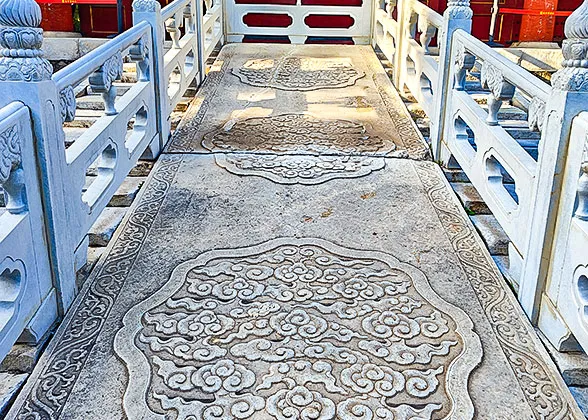 |
| Cloud-patterned Stone Sculpture |
Gate of Literary Glory: True Dragon Hidden Behind Clouds
Enter through the gate with a yellow-tiled single-eaved gable roof. Beyond lies a marble bridge, preceded by three flights of nine steps. Unique cloud-patterned stone sculptures greet you, a contrast to the dragon designs elsewhere in the Forbidden City, hinting at its former role as the crown prince's residence.
Main Hall of Literary Glory: Take Incense Rituals before Entering
To enter the main hall before the lecture, the emperor should undergo a unique ritual: his clothes are smoked with incense. Inside, two golden cranes grasp black incense sticks, resembling thin candles, donated by foreign countries as treasures. These incense sticks are mandatory for officials to smoke their clothes before delivering lectures to the emperor.
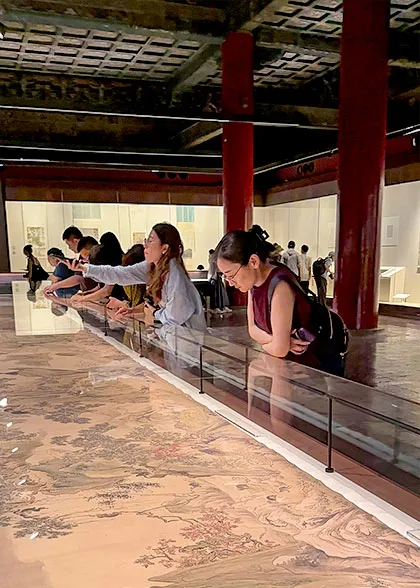 |
| Admiring the Exhibit in the Main Hall |
Hall of Transmitted Wisdom: Honoring Ancient Sages
The Hall of Transmitted Wisdom dates to 1685, located in the east courtyard of the Hall of Literary Glory. It honors ancient Chinese sages and saints, with sacrifices offered here by officials or the emperor the day before the lecture ceremony. The name "Chuanxin" signifies the transmission of wisdom from these ancestors.
Nearby lies the Dapao Well, known for its sweet water, earning it the title of "Second Best Spring in the Capital".
Pavilion of Literary Profundity: The Largest Royal Library
The Pavilion of Literary Profundity stands as the largest royal library in the Forbidden City. It was constructed in 1776 to house the Complete Library in Four Sections (Si Ku Quan Shu), the most extensive compilation of ancient Chinese literature. Unlike the golden and red hues that dominate other imperial structures, the Pavilion adopts a predominantly cool tone, creating a refreshing contrast.
When Built – History of the Hall of Literary Glory
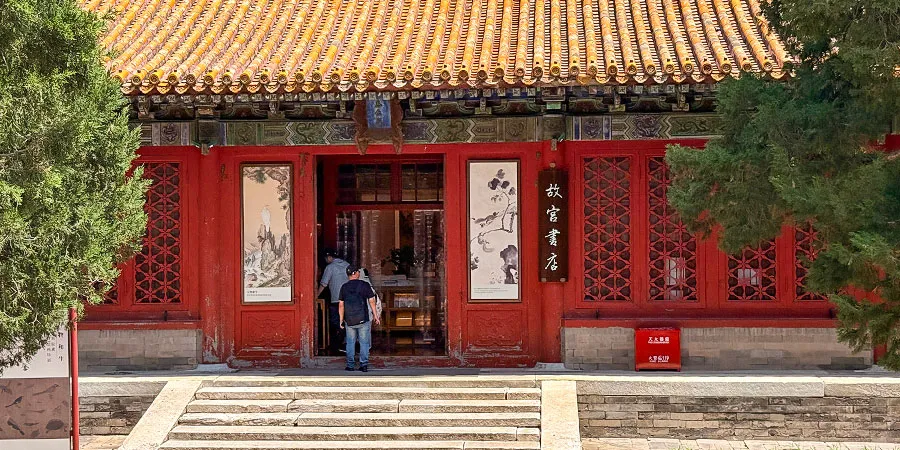 |
| Hall of Benevolence, Now a Forbidden City Bookstore |
The Hall of Literary Glory was initially constructed in 1420. It was destroyed by fire during the turmoil of 1644, towards the end of the Ming Dynasty. In 1683, a new version of the Hall of Literary Glory emerged, modeled after the Hall of Martial Valor. This rebuilt structure has stood the test of time until today.
![]() Next:
Next:
Go west back to the Taihemen Square, and continue the tour along the central axis.![]() Gate of Supreme Harmony (Taihemen)
Gate of Supreme Harmony (Taihemen)
Go east to the East Prosperity Gate (Donghuamen) to see the Ancient Architecture Museum. ![]() Further Reading: How to visit the Forbidden City
Further Reading: How to visit the Forbidden City